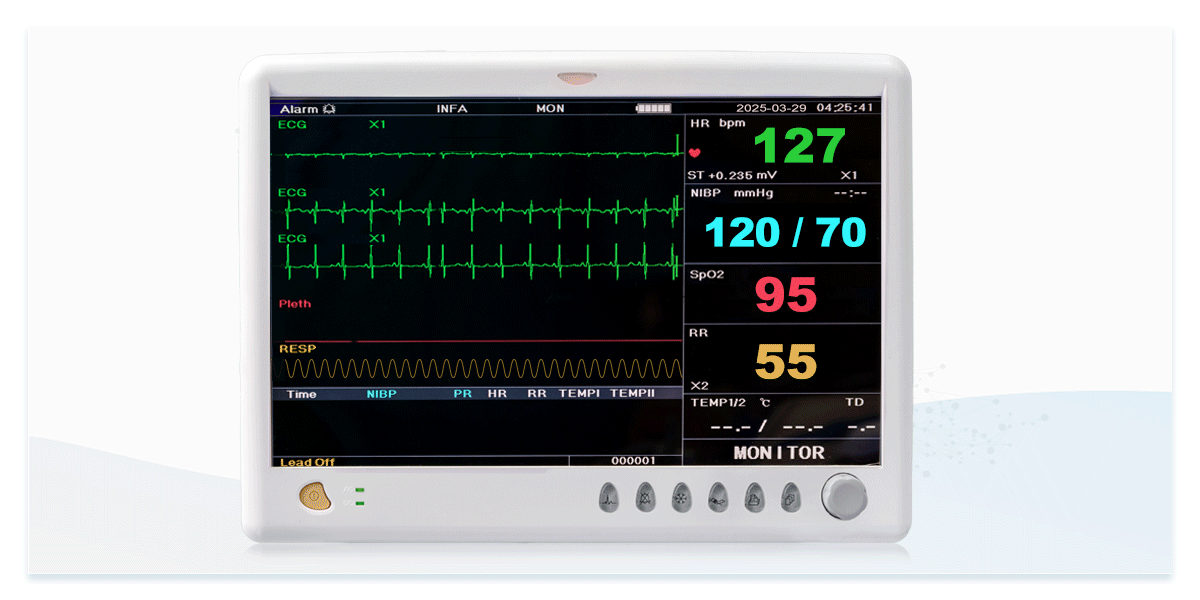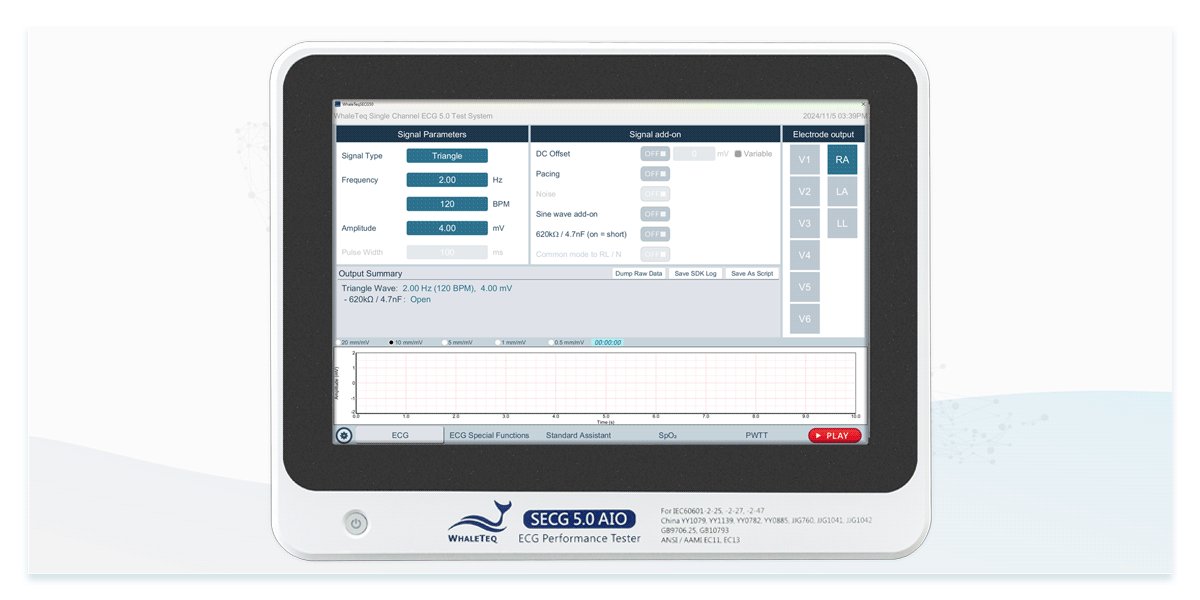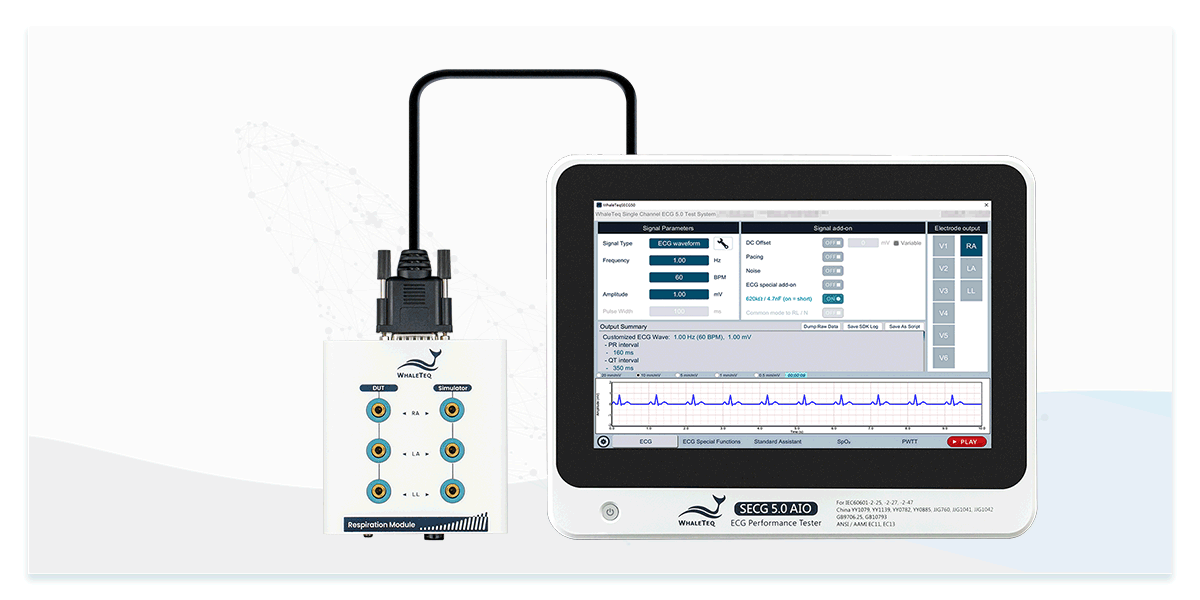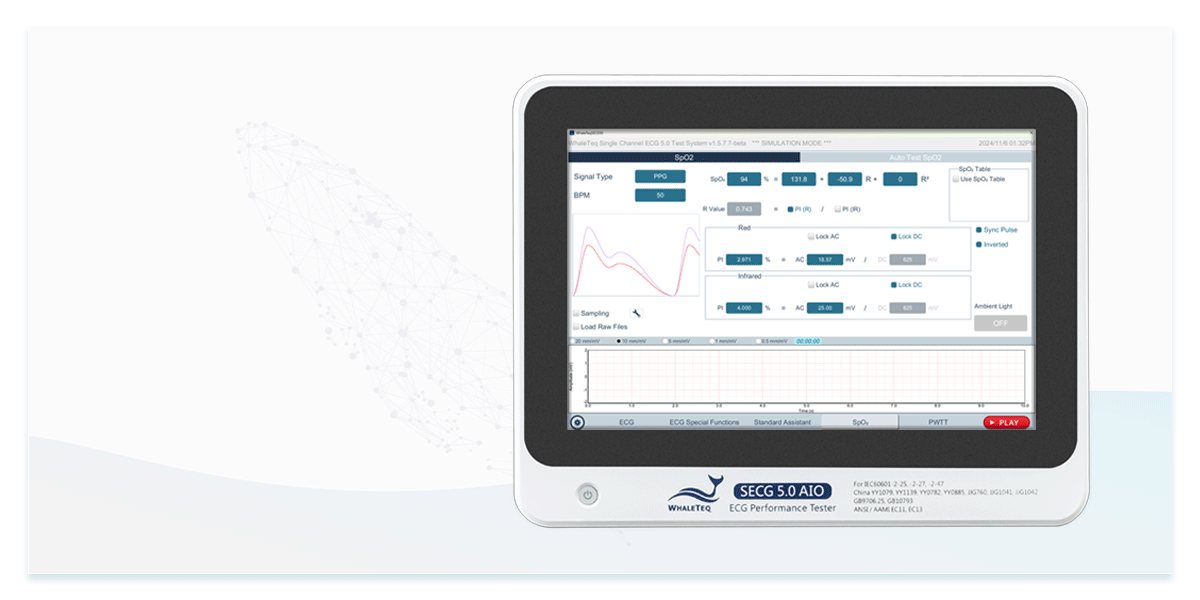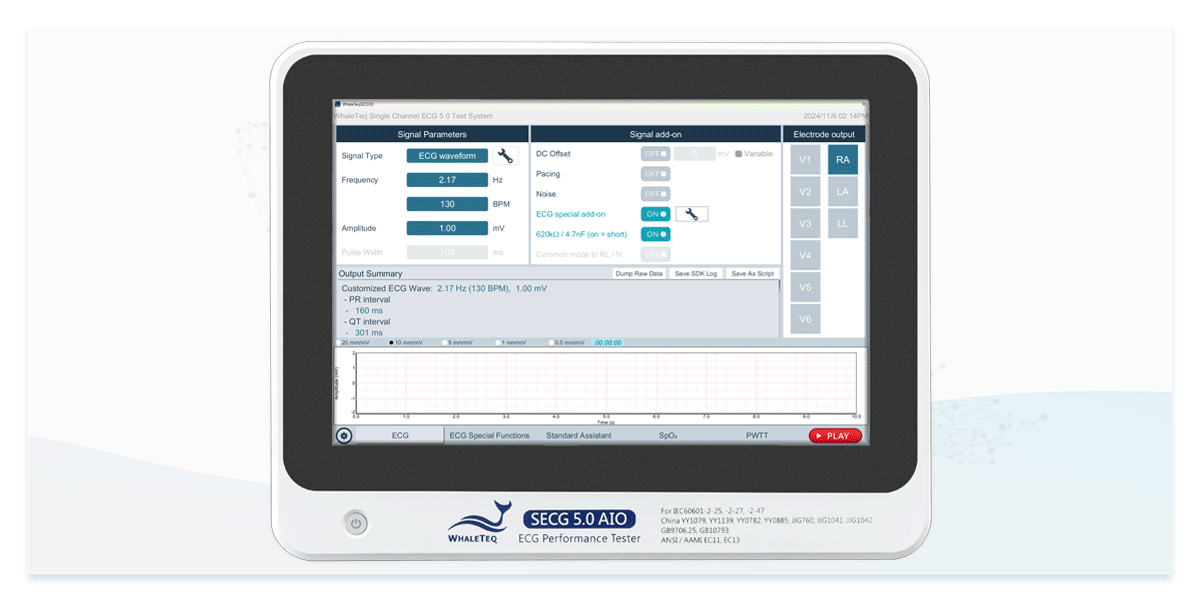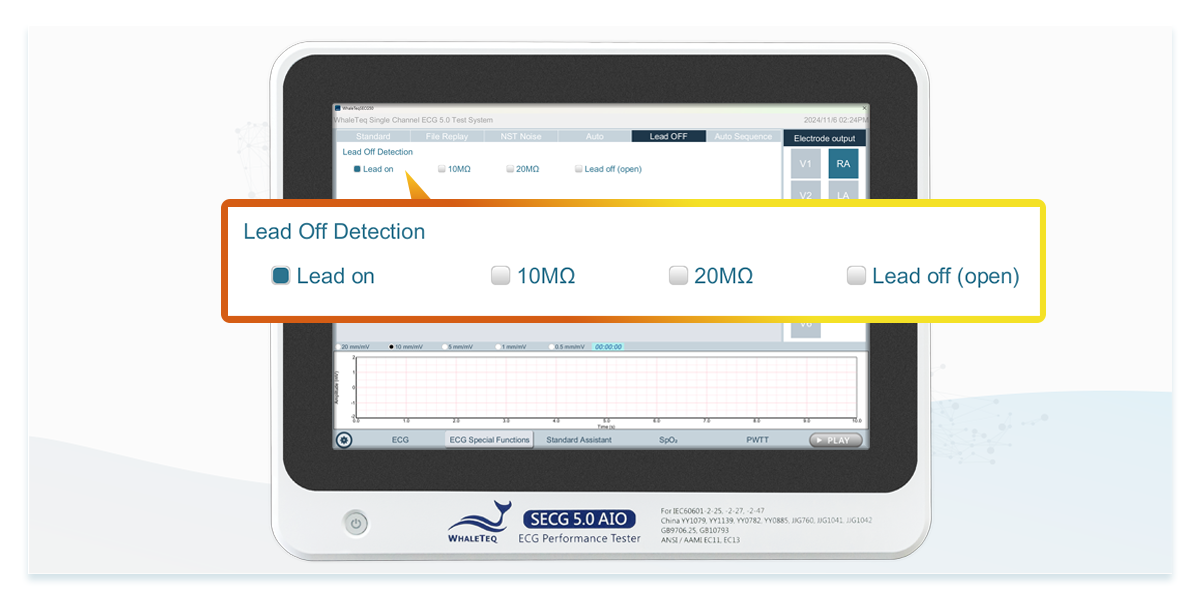Patient monitors detect multiple physiological signals, making them invaluable in ICUs, emergency rooms, ambulances, and even home care. These devices enable healthcare providers to assess a patient's condition promptly, ensuring timely intervention when needed.
However, patient monitors, especially those used in demanding environments such as hospitals, ambulances, and air transport, face rigorous accuracy requirements established by the international medical standard IEC 60601-2-27, which governs ECG measurement precision.
In these environments, factors like vibration, temperature, humidity fluctuations, and electromagnetic interference from nearby equipment can impact measurement accuracy. Standardized regulations are thus crucial to ensuring consistent quality across manufacturers when designing patient monitors.
Aside from compliance testing, developing multiple monitoring capabilities requires overcoming several challenges. This article will discuss three major testing challenges for patient monitors and solutions for effective testing.
Three Major Testing Challenges
1. Readout Accuracy and Reliability
To validate the ECG measurement accuracy of patient monitors, IEC 60601-2-27 requires compliance with specific amplitude and time accuracy criteria. Key test items include ''Accuracy of signal reproduction'', ''Input dynamic range and differential offset voltage'', ''Input impedance'', ''Multichannel crosstalk'', etc. These test items regulate the allowable tolerance between measured and actual amplitudes, taking account of conditions such as DC offset or input impedance.
The standard also specifies tests like ''Sweep speed'', which verifies accurate ECG signal display across various sweep speeds.
In addition to accuracy, signal reliability is critical. Tests for handling noise and baseline wander ensure that the ECG signal display remains clear and heart rate measurements are unaffected. So, IEC 60601-2-27 specifies the ''Baseline reset'' test item for verifying ECG signal clarity after baseline reset, and another test item involves superimposing mains frequency noise to confirm heart rate measurements remain within an allowable tolerance.

2. Performance in Simultaneous Multiparameter Monitoring
Patient monitors measure various physiological signals, such as ECG, respiration rate, and SpO2, simultaneously. This requires an effective design to manage signal interference and ensure measurement accuracy. Challenges include integrating sensors for different signals, minimizing noise and interference between sensors, and adopting appropriate signal processing and filtering techniques to improve measurement accuracy while taking account of physiological signal correlation in real-world scenarios.
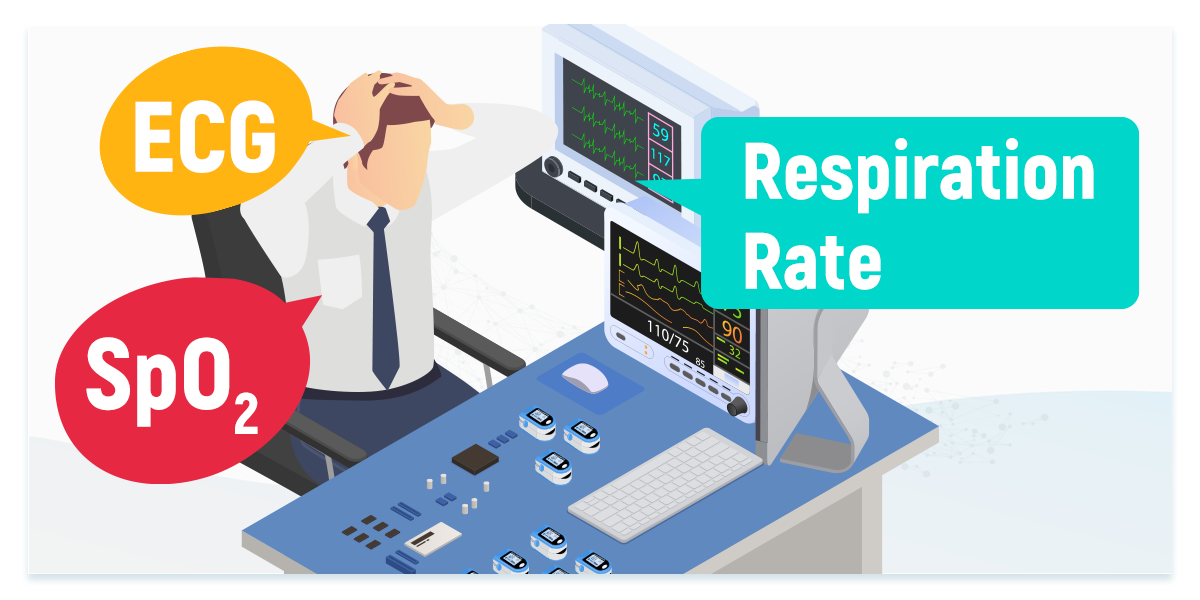
3. Sensitivity of Alarm Functions
An essential feature of patient monitors is the ability to alert healthcare providers to abnormal conditions during real-time monitoring, supporting rapid clinical decision-making.
Thus, it's critical for the monitor to accurately detect issues like abnormal heart rate, respiration rate, SpO2 levels, or ECG leads off. However, sensitivity must be balanced to avoid false alarms caused by minor fluctuations.
IEC 60601-2-27 specifies alarm-related test items, such as ''Time to alarm for tachycardia'', requiring the monitor's response time to indicate ''tachycardia'' must meet the manufacturer's specifications. For battery-operated monitors, the standard also requires a technical alarm five minutes before initiating the shutdown, and a shutdown in a safe manner is needed.
Solutions to the Three Testing Challenges
Whether performing compliance testing or verifying designs, manufacturers rely on vital sign simulators to test their products.
This is because integrating signal generators, output circuits, and other components into test equipment, along with maintenance and calibration, can be resource-intensive for engineers during product development. Additionally, involving people in testing is impractical, as each measurement is unique and unrepeatable, making it unsuitable for product development requiring consistent and reproducible test settings.
Thus, simulators eliminate the need for engineers to design test equipment and ensure repeatable test conditions.
1. Readout Accuracy and Reliability—Using Standard Signals to Achieve Consistent Test Conditions
IEC 60601-2-27 defines specific signals for each test item. For example, ''Accuracy of signal reproduction'' requires a 2Hz triangle wave at various amplitudes (4mV, 2mV, 0.8mV, and 0.4mV), while other test items call for sine waves. Simulators can also generate required test signals such as DC offset of ±300mV, input impedance of 620kΩ, and mains frequency noise at 50Hz and 60Hz, ensuring consistent test conditions for repeatedly verifying patient monitor performance.
2. Performance in Simultaneous Multiparameter Monitoring—Simulating Multiple Physiological Signals in Real-world Monitoring Scenarios
Designed to address the multiparameter monitoring demands of patient monitors, simulators can synchronize and output various signals, closely simulating real monitoring conditions for thorough testing on signal processing techniques. For instance, outputting ECG and respiratory signals together for simulating their correlation to verify if the monitor can simultaneously capture accurate data for both, or simulating heart rate and SpO2 variations to validate real-time monitoring performance across these values.
• Simultaneously outputting ECG and respiratory signals
• Simulating heart rate and SpO2 variations
3. Sensitivity of Alarm Functions—Verifying Alarm Sensitivity with Fine-tuned Simulated Signals
To test alarms for abnormal values, simulators can be configured with parameters outside the normal range, allowing engineers to check the monitor's response time. For ECG leads off, simulators use different impedance values to simulate various conditions between electrodes and skin, ensuring accurate alarm functionality.
By adjusting the parameters of simulators for testing, engineers can evaluate the product's threshold settings and anomaly detection capabilities.
• Adjusting heart rate and respiration rate
• Lead-off Simulation
Patient monitor development involves multifaceted challenges and considerations, and this article highlights three core issues where test equipment can provide breakthroughs.
By using test equipment to efficiently verify patient monitors, manufacturers can effortlessly achieve regulatory compliance while developing their own designs, and further shorten development timelines for accelerating time-to-market.
Suggested Products and Testing Solutions
A standalone simulator ideal for hardware and system engineers in the R&D department.
It generates ECG analog signals with options to superimpose respiratory, pacing, and noise simulated signals, closely simulating real-world conditions and effectively verifying patient monitor performance.
The simulator can also connect with a respiration module for enhanced measurement range and resolution of impedance respiratory signals, or pair with a PPG module to simulate SpO2 signals for PWTT and PWV testing.
Using WhaleTeq SECG 5.0 AIO Multi Vital Sign Simulator and CMRR 3.0+ Common Mode Rejection Ratio Tester, manufacturers can complete performance tests required by IEC 60601-2-27 and save time spent on studying the medical standard and training.
